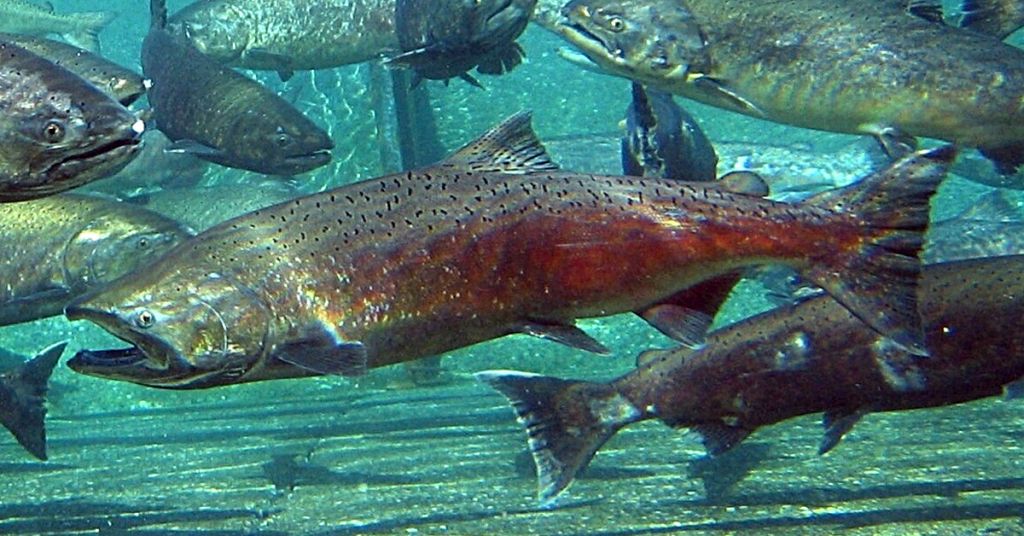Federal and state announcements to restore Snake River salmon include a deadline—and the word “breach”

Big fish: Columbia River Basin salmon are set to become major factors in 2022 political campaigns. Photo: Pacific Northwest National Laboratory
By Jordan Rane. October 26, 2021. Salmon recovery on the Lower Snake River got a major push last week from top state and federal legislators, one of which set a resolution deadline while broaching the most hot-button word (sounds like “broach”) in the decades-long controversy.
“Saving our salmon is absolutely essential to Washington state’s economy and cultural heritage—it is an urgent undertaking that we are fully committed to,” said Washington Gov. Jay Inslee (D) and Sen. Patty Murray (D) in a joint statement on Oct. 22.
MORE: 140 miles: Snake River dams controversy in detail
The co-statement says state and federal governments should jointly determine “whether there are reasonable means for replacing the benefits provided by the Lower Snake River dams, sufficient to support breach as part of a salmon recovery strategy for the Snake River and the Pacific Northwest.”
This determination will be approached “with open minds and without a predetermined decision,” added Inslee and Murray. “We recognize the urgency of tackling this longstanding challenge as salmon runs continue to decline. Our recommendations will be completed by no later than July 31, 2022.”
Those recommendations will include a plan for replacing the services of four Lower Snake River dams if breached to avert salmon extinction.
Biden administration weighs in
A day earlier, in a U.S. Department of the Interior press release, the Biden-Harris administration announced plans to chart a comprehensive path to address the same issue—specifically “regarding the operation of 14 federal dams and their impacts on the region’s salmon and steelhead.”
“Today’s filing represents an important opportunity to prioritize the resolution of more than 20 years of litigation and identify creative solutions that improve conditions for salmon for years to come,” said Secretary of the Interior Deb Haaland. “While it is important to balance the region’s economy and power generation, it is also time to improve conditions for Tribes that have relied on these important species since time immemorial.”
MORE: Idaho pol: Snake River dams will decide election
Lots of political rhetoric? For sure.
But the dual announcements signal the most serious top-level considerations yet for breaching four dams on the Lower Snake River by 2030, while restoring billions in lost benefits as part of Biden’s infrastructure bill—a plan originally proposed by Idaho Rep. Mike Simpson (R) earlier this year.
Simpson’s proposal has received Tribal, public and bipartisan support as well as heated opposition.
MORE: Breach on! Idaho Rep. Simpson calls for removal of Snake River dams
According to recent studies, Snake River spring and summer chinook salmon populations threatened by managed water—with its rising temperatures, stagnancy and habitat obstruction—could reach extinction levels by 2025 if annual population decline percentages (currently 19%) continue.
Columbia Insight contributing editor Jordan Rane is an award-winning journalist whose work has appeared in CNN.com, Outside, Men’s Journal and the Los Angeles Times.







